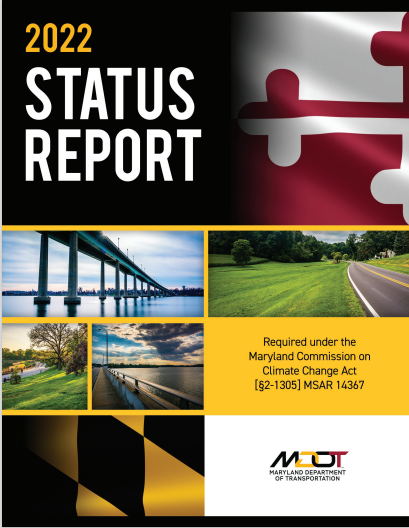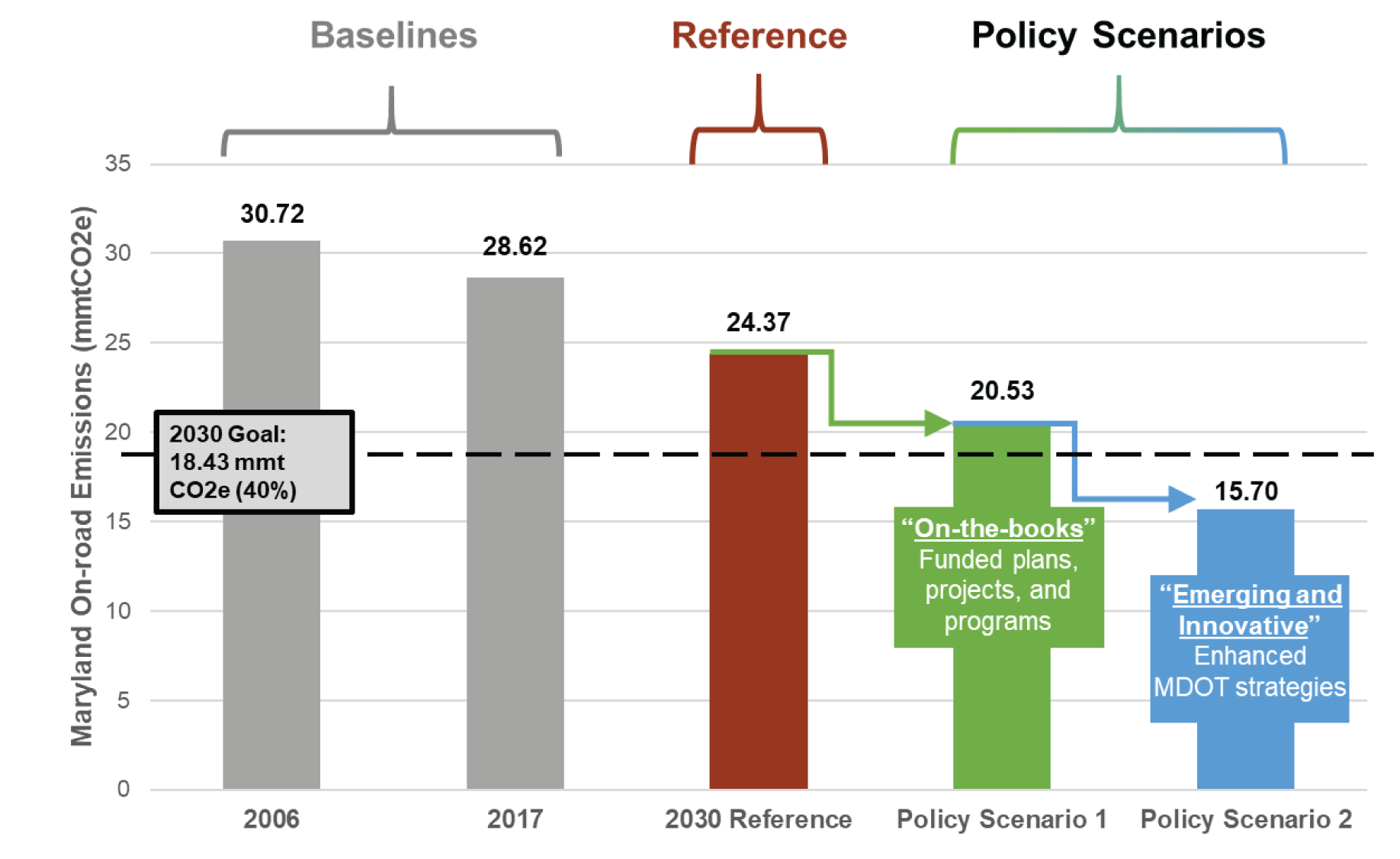MDOT Greenhouse Gas Reduction Act (GGRA) Plan
Appendix J of the Maryland 2030 GGRA Plan
Background
In 2009, Maryland adopted the Greenhouse Gas Emissions Reduction Act (GGRA), which required the State to reduce GHG emissions 25 percent from a 2006 baseline by 2020, in a way that ensures a positive impact on Maryland's economy, protects existing manufacturing jobs and creates new jobs in the State. The law was amended in 2016 and incorporates additional reporting and mid-course reaffirmation goals as well as set a new benchmark requiring a 40 percent reduction of emissions from 2006 levels by 2030 (“40 by 30”) to ensure continued progress after 2020 toward the State's long-term GHG emission reduction goals. For more information, visit Maryland’s GGRA.
2022 Status Update
| MDOT is required to submit an annual report to the Governor and General Assembly reflecting the progress MDOT has made toward meeting the goals of the Greenhouse Gas Reduction Act of 2009 and its 2016 Reauthorization. Starting in 2015, MDOT has prepared Annual State Agency Reports detailing progress and performance. Prior year’s status reports can be found here. |
 |
MDOT GGRA Plan
MDOT worked in coordination with MDE, other agencies, and partners to develop and test strategies for the transportation sector to achieve the “40 by 30” goal. The 2020 Maryland Department of Transportation (MDOT) GGRA Plan presents MDOT’s approach to meet the requirements of the GGRA.
The current statewide emissions inventory, developed for 2017, shows that on-road transportation is the single largest GHG emissions generator in Maryland, representing 36 percent of total GHG emissions. Off-road transportation (aviation, marine, and rail) represents another 4 percent.
Total annual statewide VMT steadily increased in line with population growth from 2014 through 2019. VMT in Maryland dropped nearly 16 percent in 2020 due to the COVID-19 pandemic compared to 2019, largely in response to limits on in-person gatherings, and calls for reduced travel. The 2021 VMT data and estimates show that travel continues to gradually rebound, although total annual VMT is still anticipated to be 10 percent below 2019 levels.
A steady increase in transportation demand indicators including growth in population, vehicle miles traveled (VMT), and congestion combined with limited revenue relative to needs creates a major challenge. Based on MDOT analysis accounting for these challenges and by harnessing new opportunities, it is possible for Maryland’s transportation sector to meet the “40 by 30” goal. The analysis considered two policy scenarios built from the Maryland Transportation Plan (MTP), the Consolidated Transportation Program (CTP), and Maryland’s two major Metropolitan Planning Organizations’ (MPO) plans and programs (Baltimore and Washington D.C. regions). Achieving the goal will not be easy and requires an innovative and cost-effective approach that includes:
- An aggressive investment in transportation beyond current levels of projected funding,
- Supportive policy and new and additional resources enabling MDOT to fund and advance these needed investments,
- A shared commitment and coordinated approach between MDOT and its partners to advance reliable, low-cost, and low-carbon technologies, and
- A best-case scenario for the roll-out and adoption of transportation technology, including market penetration of electric vehicles (EVs) into public and private fleets in Maryland.

MDOT is a member of the Maryland Commission on Climate Change and is a participant in its four Work Groups.